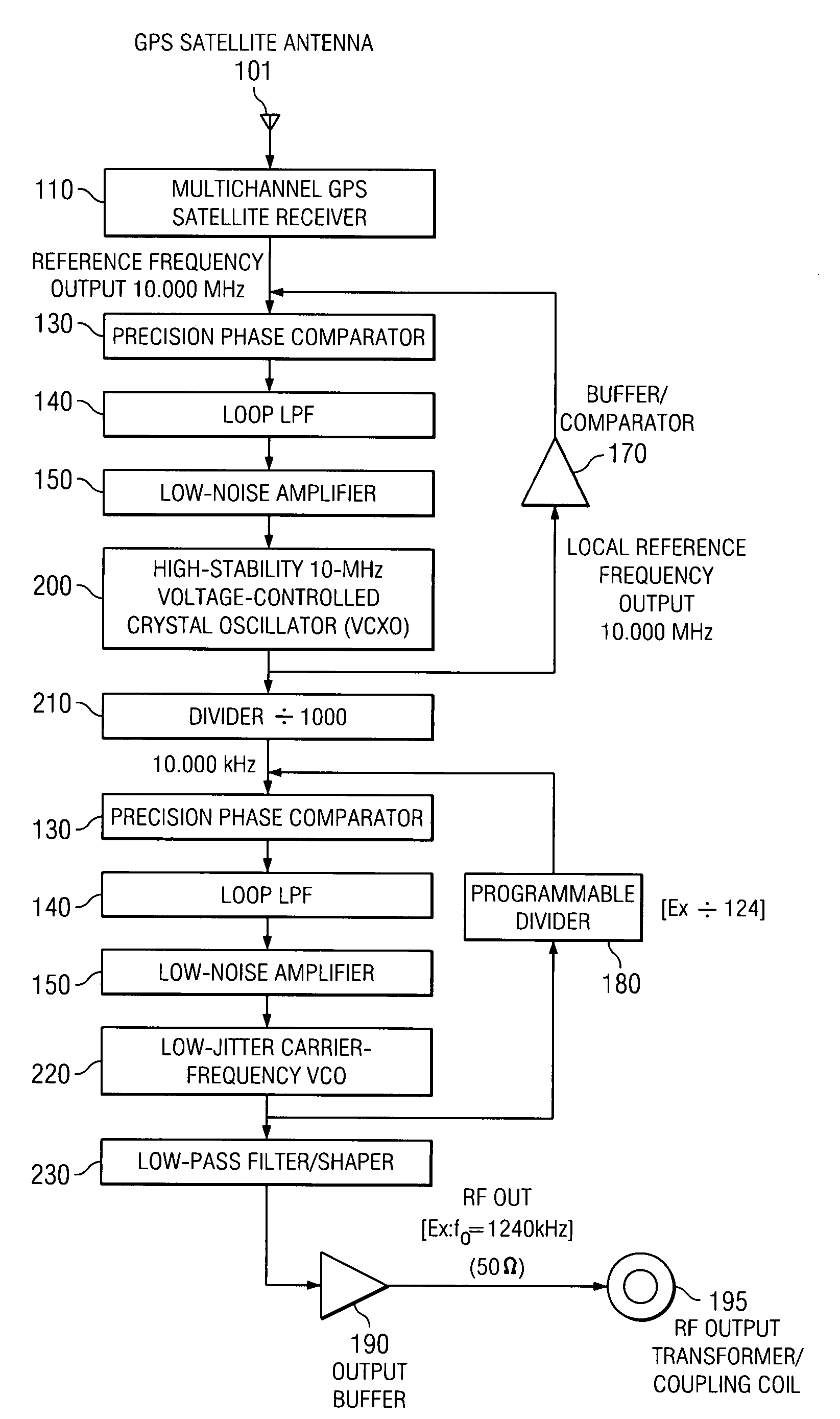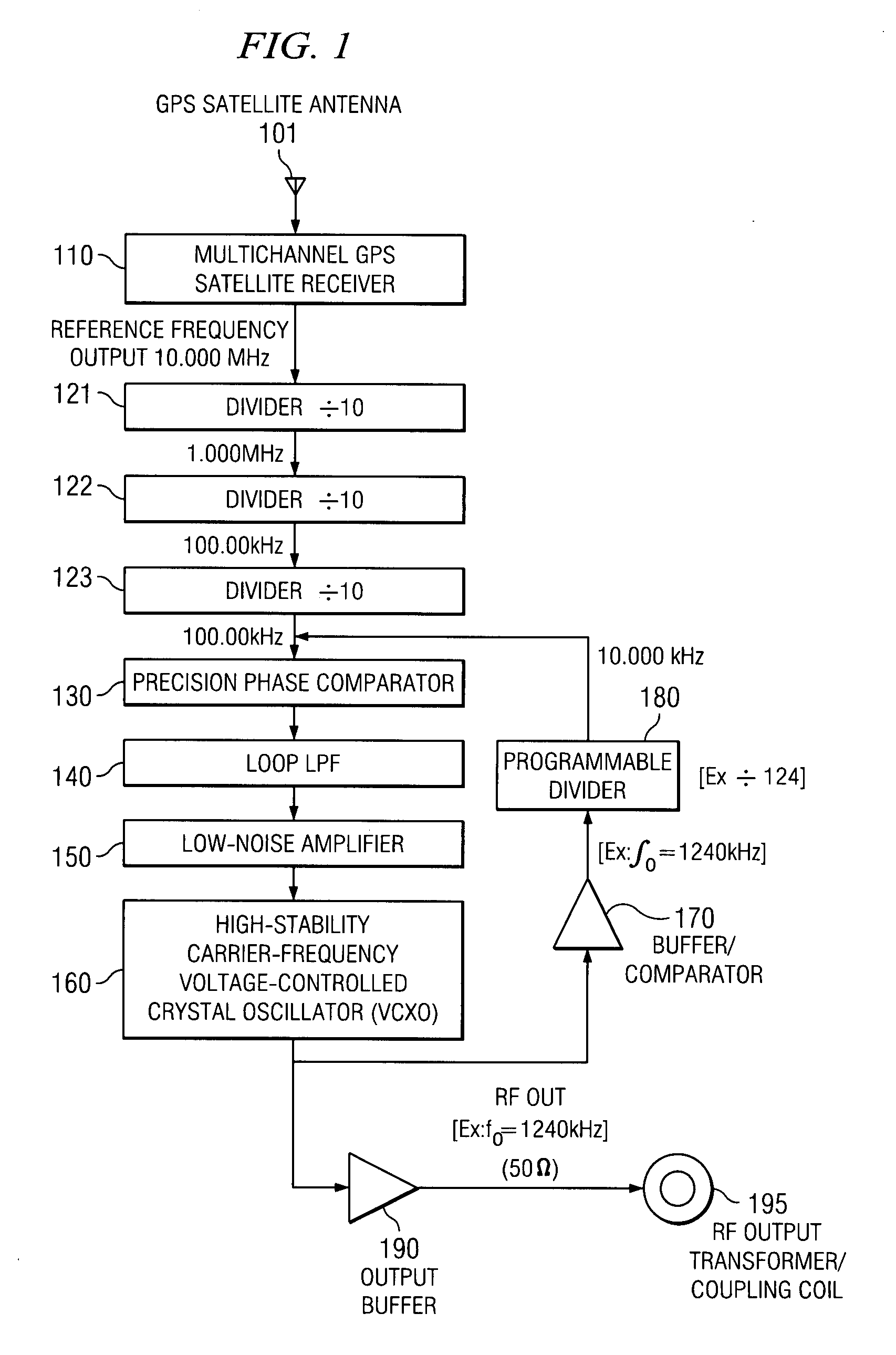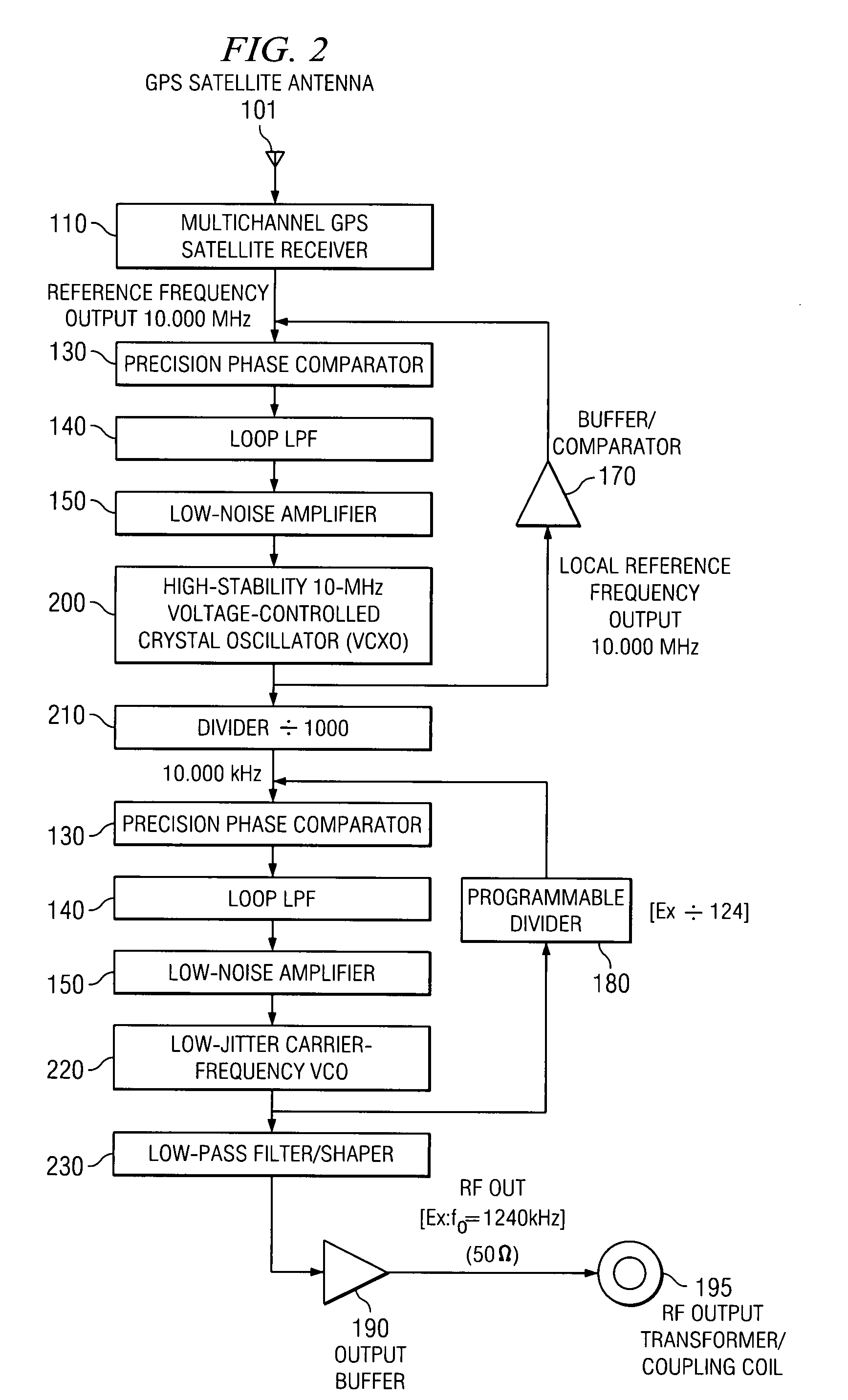Carrier phase synchronization system for improved amplitude modulation and television broadcast reception
a carrier phase synchronization and amplitude modulation technology, applied in the field of communications, can solve the problems of inability to achieve such separation for amplitude-modulated (am) radio stations, concurrent distortion, and high modulation effects, and achieve the effect of reducing distortion effects
- Summary
- Abstract
- Description
- Claims
- Application Information
AI Technical Summary
Benefits of technology
Problems solved by technology
Method used
Image
Examples
example 1
[0055]A basic configuration of the GPS-disciplined oscillator is simple, as shown in FIG. 1. A GPS satellite antenna 101 is connected to a multichannel GPS satellite receiver 110. A reference frequency output from the multichannel GPS satellite receiver 110 is fed to a first divider 121. The output from the first divider 121 is fed to a second divider 122. The output from the second divider 122 is fed to a third divider 123. The output from the third divider 123 is fed to a phase comparator 130. A loop low-pass filter 140 is coupled to the phase comparator 130. A low-noise amplifier 150 is coupled to the loop low-pass filter 140. A voltage-controlled crystal oscillator 160 (VCXO) is coupled to the low-noise amplifier 150. The output of the VCXO 160 is sent to the phase comparator 130 via a buffer / comparator 170 and a programmable divider 180. The output of the VCXO 160 is also sent to a transformer / coupling coil 195 via an RF output buffer 190.
[0056]The oscillator 160 may be a more-...
example 2
[0059]A less expensive version of the technique is illustrated in FIG. 2, where the GPS-derived reference frequency is used to discipline a local high-quality VCXO 200 (or other super-stable oscillator) with the same nominal frequency. A divider 210 is used to divide the reference frequency (here, 10.000 MHz) down to the common 10-kHz step size, and the final transmitted carrier frequency is synthesized in a conventional manner via a low-jitter VCO 220, which can be a standard square-wave oscillator. The VCO 220 drives a switched-integrator stage 230 to produce a triangular wave at the same frequency, which in turn is soft-clipped (shaped) to a very nearly sinusoidal waveform to yield the final low-distortion output carrier frequency. The principal advantage to this second approach is the elimination of the custom-manufactured carrier-frequency crystal; as a result, this design is completely standardized, regardless of the particular channel desired. An internal programmable switch ...
example 3
[0060]A third variation of the overall precision-control scheme is shown in FIG. 3, where the GPS-derived reference frequency is feed to a multiplier 310 to be multiplied to serve as the high-frequency clock (here, 200 MHz) for a fast digital numerically controlled oscillator (NCO) circuit 320, such as that included in the AD9854 chip from Analog Devices, Inc. or in numerous other similar chips from several other manufacturers (e.g., Intel, Intersil, and Philips). Here, the main NCO 320 accumulates digital phase at its clocking rate; the phase data is presented continually to a phase-to-amplitude data converter 330 [read-only memory] (“Sine-ROM”) block, which outputs a series of amplitude values corresponding to a pure sine-wave at the programmed frequency. These data words, typically at resolutions of from 8 to 14 bits, are then fed to a high-speed digital-to-analog (D / A) converter 340, which generates the stepwise analog carrier output signal. A final downstream low-pass filter / wa...
PUM
 Login to View More
Login to View More Abstract
Description
Claims
Application Information
 Login to View More
Login to View More - R&D
- Intellectual Property
- Life Sciences
- Materials
- Tech Scout
- Unparalleled Data Quality
- Higher Quality Content
- 60% Fewer Hallucinations
Browse by: Latest US Patents, China's latest patents, Technical Efficacy Thesaurus, Application Domain, Technology Topic, Popular Technical Reports.
© 2025 PatSnap. All rights reserved.Legal|Privacy policy|Modern Slavery Act Transparency Statement|Sitemap|About US| Contact US: help@patsnap.com



